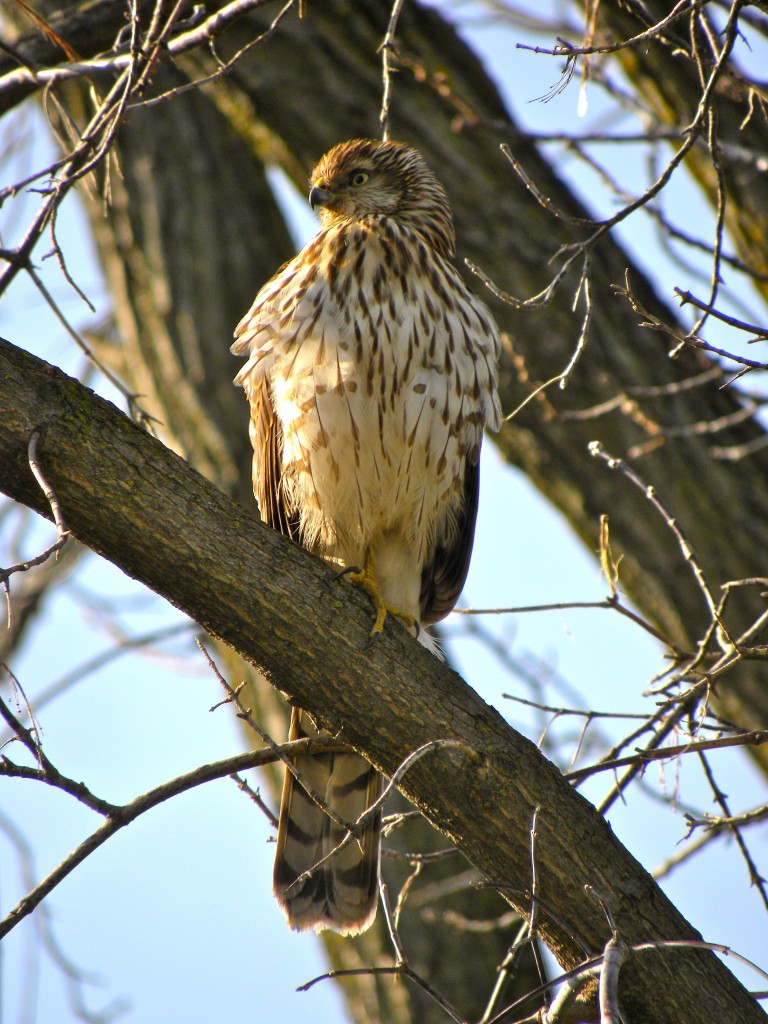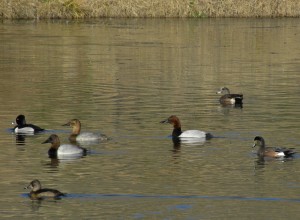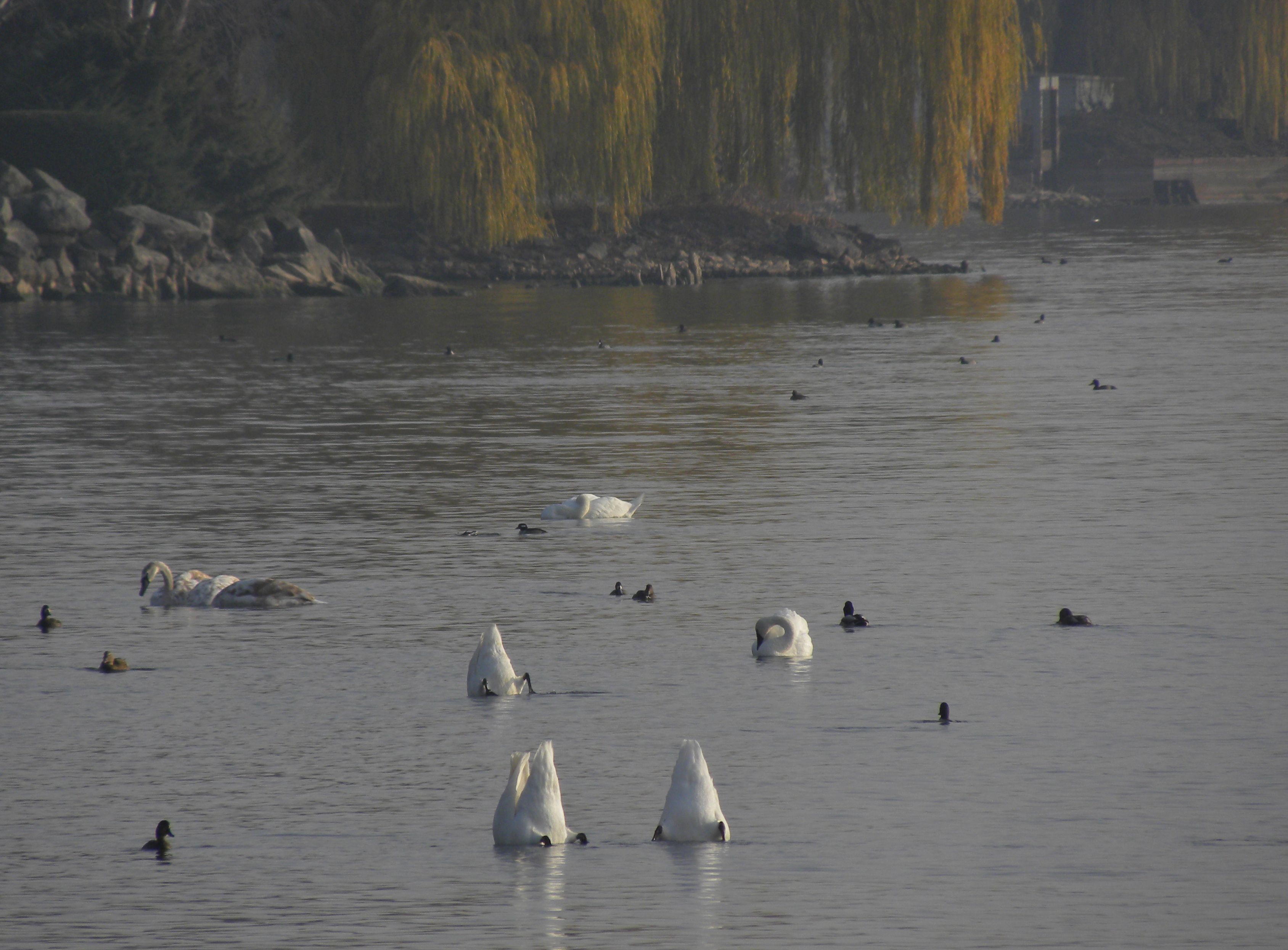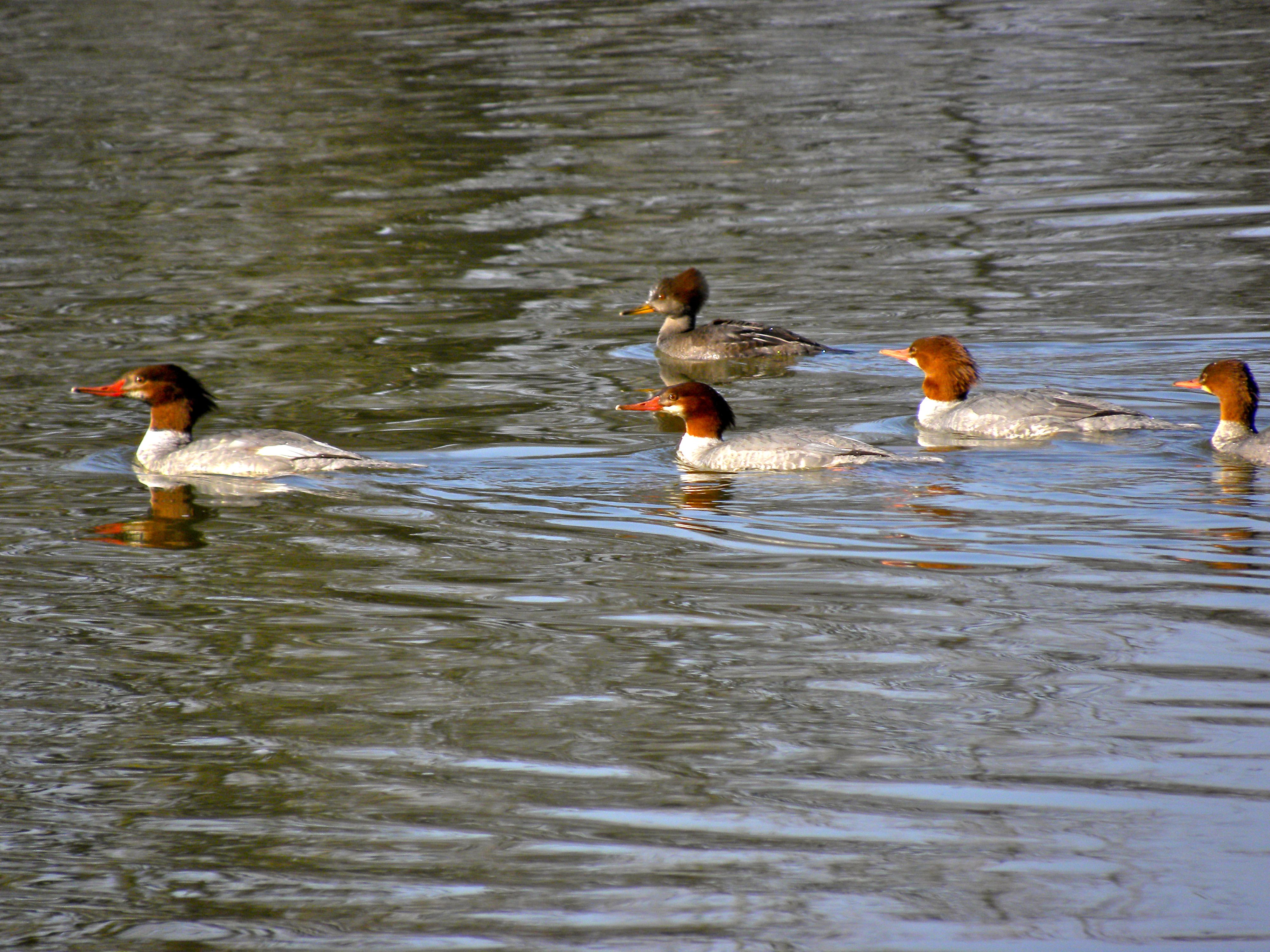November 25 2012. Today was a get-out-of-the-wind day; probably the first of this season and certainly not the last. I had to inspect some properties for a volunteer position I hold and my tour took me to a number of lakeside properties. There were snowflakes swirling in the air, and the sky was dark and troubled, the sort of weather a radio announcer called Beethoven Weather.
The birding was rather thin, especially among passerines, although I managed to catch a glimpse of a couple of Carolina Wrens working low in the fallen leaves under some overgrown Forsythia shrubs.
Funny thing about approaching the lake in colder months is that there always seems to be an on-shore wind, so it can be an eye-watering challenge. Collar turned up, head down and hand on hat to keep it (the hat) from blowing away, I explored a couple of stretches of rocky shorelines and found that many birds shared my dim view of current conditions. I was quite struck by this group of hunkered-down Mallards, how they seem to blend in with the surrounding rocks both in shape and size as well as overall colour tone.
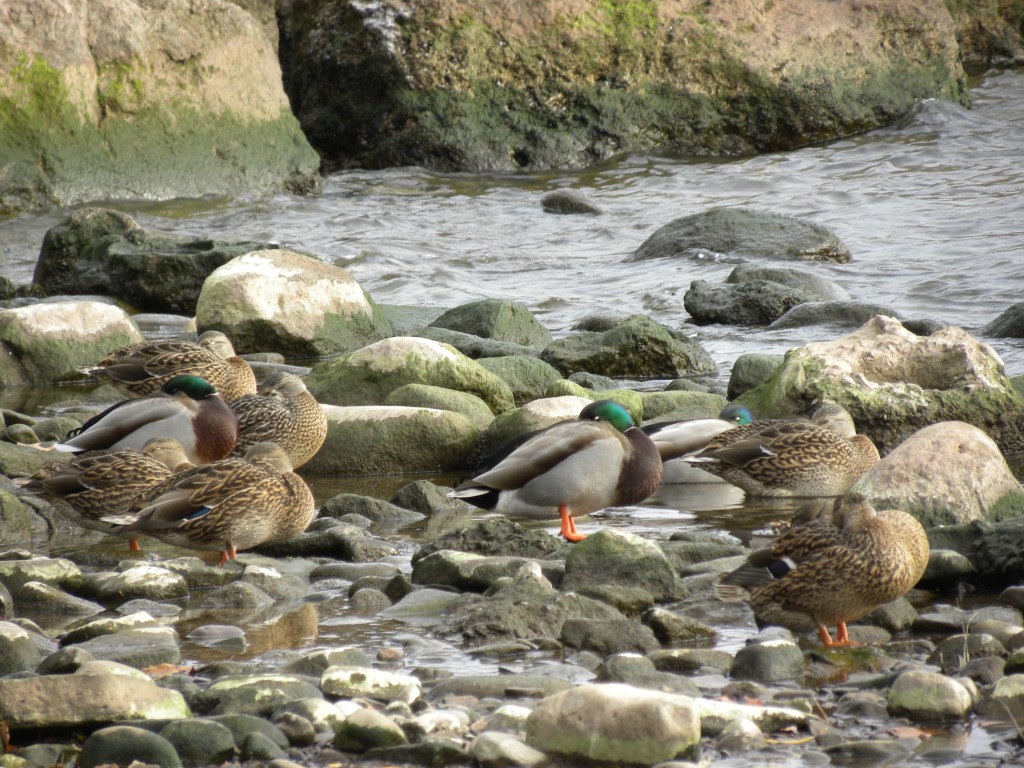
We have a flock of Trumpeter Swans that stays in our bay all winter. Their presence here has quite a story; Trumpeter Swans were extirpated from Ontario by over-hunting sometime well before early ornithologists started keeping records. About 30 years ago efforts were made to re-introduce them. The results were promising right from the get-go and to cut a long story short it has been successful to the extent that a stable and sustainable population now winters along the shoreline of Lake Ontario and breeds within two or three hundred kilometers north of it.
The group I watched this morning was feeding, muttering among themselves with their unique trumpet-blast call note and staying out of the wind.
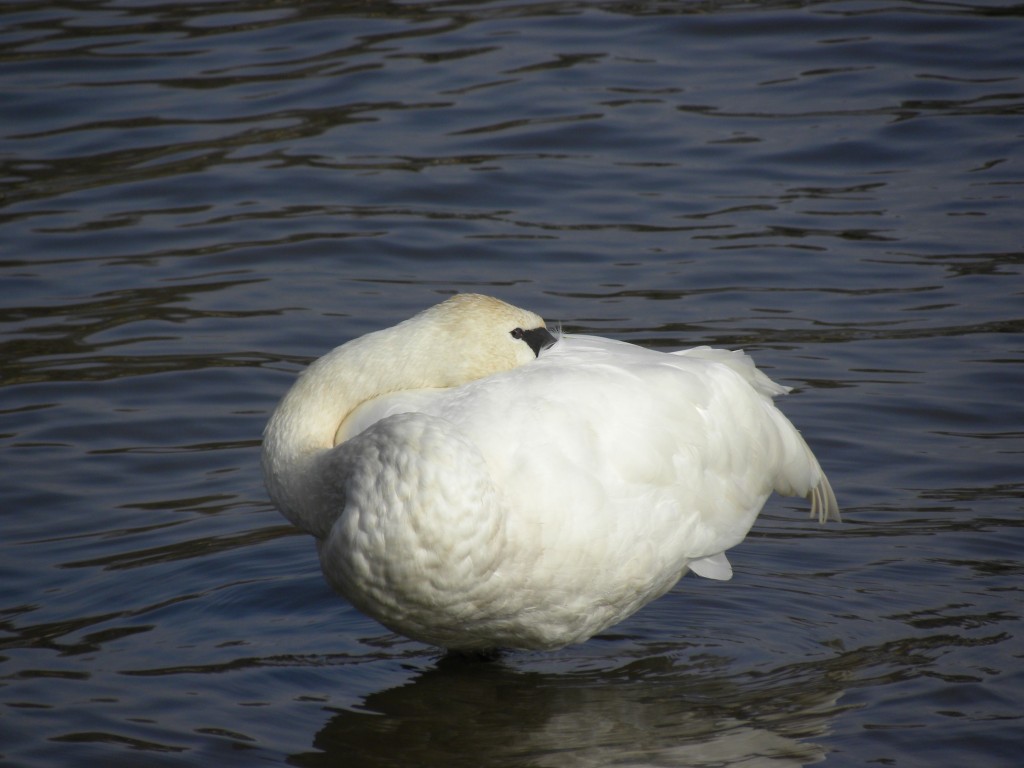
Trumpeter Swans were my Birds of the Day because they were easy to see and enjoy, but offshore I saw many Redheads, Canvasbacks, Lesser Scaup, Common Goldeneyes, Buffleheads and Ruddy Ducks; all nice birds in their own way, and their turn as bird of the day will surely come. [slickr-flickr tag=”trumpeter”]
